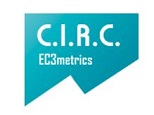The person-nature distinction in the Christology of Thomas Aquinas
DOI:
https://doi.org/10.53439/stdfyt51.26.2023.105-130Keywords:
Hypostatic Union, person, Christ, nature, suppositAbstract
The purpose of this article is to study the current state of the person-nature binomial to support the hypostatic union according to the thought of Thomas Aquinas. Both concepts need each other not only as the part and the whole to found a Metaphysics of the Incarnation, but also to be able to predicate the natures of the only supposit so as not to destroy the personal unity of Christ. In this way, for Aquinas, person and nature not only express metaphysical notions, but also concepts that are predicated of the only subsisting supposit.
Downloads
References
Barnes, C. L. (2011). Christological composition in Thirteenth-Century debates. The Thomist, 75(2), 173-205. https://doi.org/10.1353/tho.2011.0011
Busa, R. et al. (2005). Index Thomisticus (E. Bernot y E. Alarcón, eds.). https://www.corpusthomisticum.org/it/
Cardona, C. (1997). Memoria y olvido del ser. EUNSA.
Canals Vidal, F. (1997). In Christo totus homo Deus homo et totus homo Deus. Verbo, (359-360), 839-854. https://fundacionspeiro.org/revista-verbo/1997/359-360/documento-1894
--. (2001). La persona. Verbo, (395-396), 447-462. https://fundacionspeiro.org/revista-verbo/2001/395-396/documento-1459
--. (2003). La Encarnación redentora, principio fundamental de la concepción católica de la vida. Verbo, (417-418), 649-662. https://fundacionspeiro.org/revista-verbo/2003/417-418/documento-1306
--. (2004). Los siete primeros concilios (La formulación de la ortodoxia católica). Verbo, (421-422), 97-104. https://fundacionspeiro.org/revista-verbo/2004/421-422/documento-1137
Cross, R. (1996). Aquinas on nature, Hypostasis and the metaphysics of the Incarnation. The Thomist, 60(2), 171-202. https://doi.org/10.1353/tho.1996.0022
--. (2001). A recent contribution on the distinction between Monophysitism and Chalcedoniam. The Thomist, 65(3), 361-383. https://doi.org/10.1353/tho.2001.0001
Cuervo, M (1959). Introducción a la cuestión 29. En Tomás de Aquino, Suma Teológica (Vol. 2). BAC.
Culleton, A. (2010). Tres aportes al concepto de persona: Boecio (substancia), Ricardo de San Víctor (existencia) y Escoto (incomunicabilidad). Revista Española de Filosofía Medieval, 17, 59-71. https://doi.org/10.21071/refime.v17i.6145
Denzinger, E. (1963). El magisterio de la Iglesia. Manual de los símbolos, definiciones y declaraciones de la Iglesia en materia de fe y costumbres. Herder.
Elders, L. (2019). The Alexandrian and the Cappadocian Fathers of the Church in the writings of Thomas Aquinas. Espíritu, 68(158), 337-363. https://revistaespiritu.istomas.org/the-alexandrian-and-the-cappadocian-fathers/
Fabro, C. (2009). Participación y causalidad según Tomás de Aquino. EUNSA.
Forest, A. (1956). La structure métaphysique du concret selon saint Thomas d´Aquin. Vrin.
Gilson, É. (1951). El ser y la esencia (L. de Sesma, trad.). Desclée de Brouwer.
--. (1960). Introduction a la philosophie chrétienne. Vrin.
Gorman, M. (2000). Uses of the person-nature distinction in Thomas`s Christology. Recherches de Théologie et Philosophie médiévales, 67(1), 58-79. https://doi.org/10.2143/RTPM.67.1.517
--. (2017). Aquinas on the metaphysics of the Hypostatic Union. Cambridge University Press. https://doi.org/10.1017/9781316651827
Harkins, F. T. (2008). Homo assumptus at St. Victor: reconsidering the relationship between Victorine Christology and Peter Lombard´s first opinion. The Thomist, 72(4), 595-624. https://doi.org/10.1353/tho.2008.0002
Herrera, J. J. (2015) El actus essendi en Santo Tomás. Distinción, evolución y síntesis personal. En A. Llano, J. West, J. Herrera, L. Irizar, M. Johnson, N. González, P. Kwasniewski, R. Te Velde, S. Brock y S Jensen, La fascinación de ser metafísico: tributo al magisterio de Lawrence Dewan O.P. (pp. 53-81). Universidad Sergio Arboleda.
Hill, J. (2012), Aquinas and the unity of Christ: a defense of compositionalism. International Journal for Philosophy of Religion, 71(2), 117-135. https://doi.org/10.1007/s11153-011-9289-2
Juan Pablo II. (1988). Las definiciones cristológicas de los Concilios y la fe de la Iglesia de hoy [Audiencia del 13 de abril de 1988]. https://www.vatican.va/content/john-paul-ii/es/audiences/1988/documents/hf_jp-ii_aud_19880413.html
Lobato, A. (2003). El pensamiento de Santo Tomás de Aquino para el hombre de hoy: Vol. III. El hombre, Jesucristo y la Iglesia. Edicep.
Pedro Lombardo. (2012). Sentencias (C. Domínguez, trad.). Universidad San Pablo.
Mateo-Seco, L.F. y Bastero, J.L. (Eds.). (1988). El Contra Eunomium I en la producción literaria de Gregorio de Nisa. VI Coloquio Internacional sobre San Gregorio de Nisa. EUNSA.
Ocáriz, F., Mateo Seco, L.F. y Riestra, J.A. (1991). El misterio de Jesucristo (lecciones de cristología y soteriología). EUNSA.
Ordenes Morales, M. (2021/2). Sobre el ser personal de Cristo según Tomás de Aquino. Introducción a la Quaestio Disputata De Unione Verbi Incarnati. Ciencia Tomista, 148(469), 307-334.
--. (2022). Ser, persona y operación humana según Tomás de Aquino. Scripta Mediaevalia, 15(2), 153-184. https://doi.org/10.48162/rev.35.020
Patfoort, A. (1958). L´ unité d´ être dans le Christ d´aprés S. Thomas. Descleé.
Roland-Gosselin, M. D. (1948). Le De ente et essentia de S. Thomas d’Aquin. Texte établi d’après les manuscrits parisiens introduction notes et études historiques. J. Vrin.
Saranyana, J. I. (1982). La doctrina sobre el esse de Cristo en los teólogos de la segunda mitad del siglo XIII. En Cristo, Hijo de Dios y Redentor del hombre: Simposio Internacional de teología, Universidad de Navarra (pp. 637-647). EUNSA.
Sayés, J. A. (2005). Cristo, Señor y Cristo. Pelícano.
Widow, J. A. (2012). Curso de metafísica. Globo Editores.
Xiberta, B. (1954). El yo de Jesucristo: un conflicto entre dos cristologías. Herder.

















